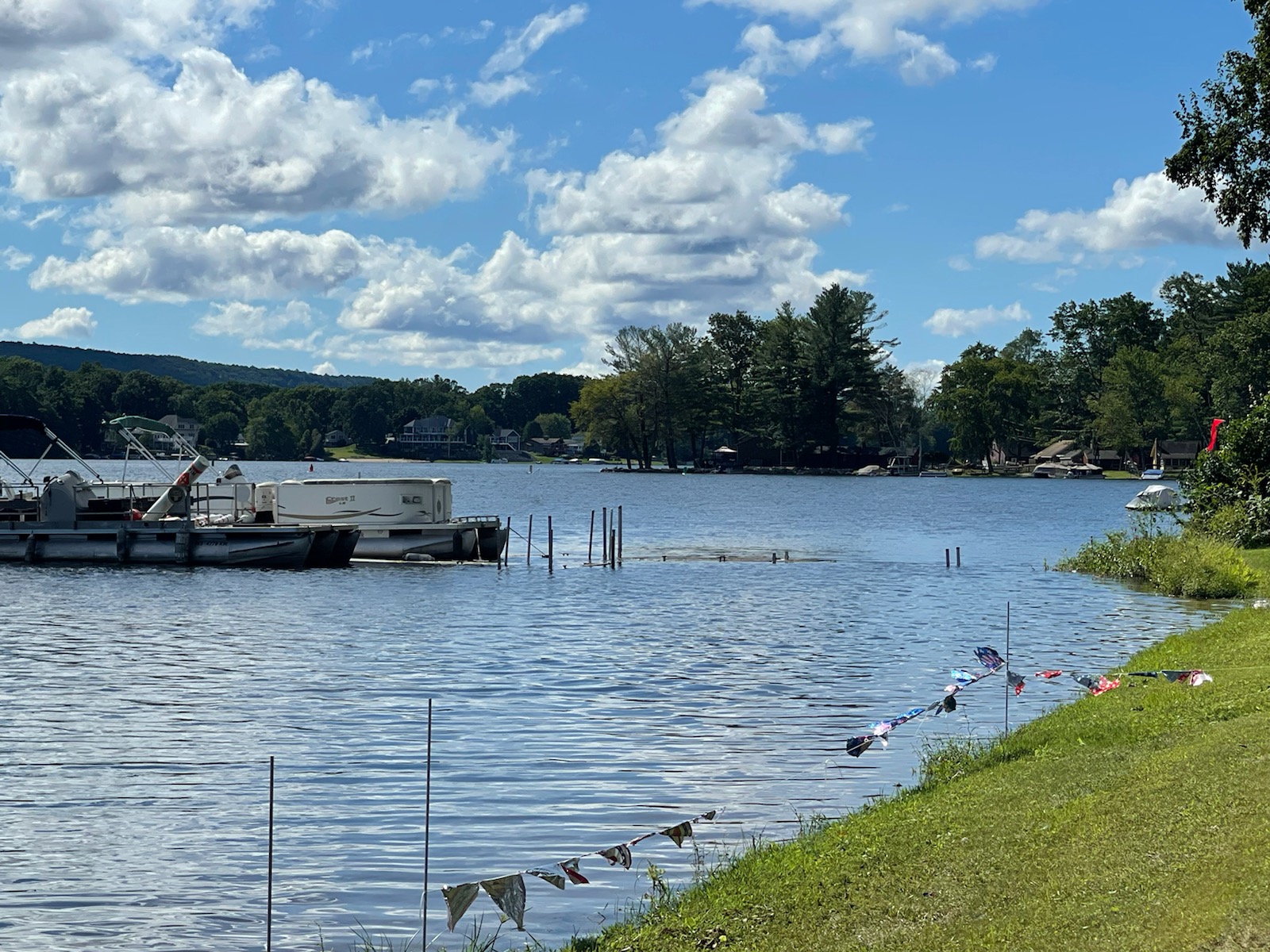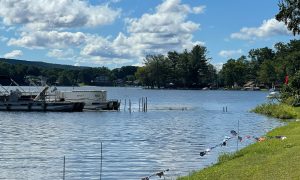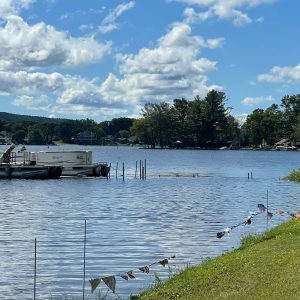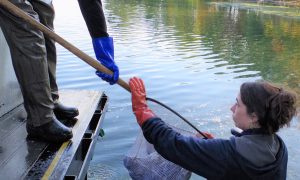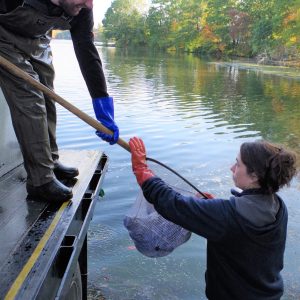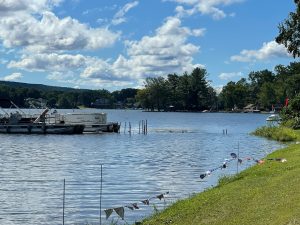
The docks of lakeside residents were in some cases completely submerged as the water level increased by 1.27 feet and counting. The rise in water level could cause erosion if motorized watercraft or high winds cause significant waves. (BILL GRANNELLS PHOTO)
SOUTHWICK — Lake Congamond was closed to all motorized watercraft Friday morning, as the water levels rapidly increased by more than a foot due to Tropical Storm Ida.
Lake Management Committee member and lakeside resident Dick Grannells said Friday that the lake had risen from a nominal level of 224.4 feet above sea level to 225.67 feet above sea level as of 6:30 a.m. Friday, an increase of 1.27 feet of water. Lake residents’ docks were reported to have been completely underwater in some cases.
Grannells said that the water had been elevated already due to recent heavy rain in the region, but the extremely heavy rain from Tropical Storm Ida pushed it up much further, and much faster.
The water level could still rise further. The Canal Brook and Great Brook outlets, which are supposed to carry water out of the lake, reversed and are now rapidly bringing water into the lake. Grannells said Great Brook’s outlet was successfully blocked, but Canal Brook has eight inches of water flowing over the 16-foot-wide culvert.
“Typically, it would take the better part of today to start reversing [back to the normal direction],” said Grannells on Friday.
Tropical Storm Ida began as a Category 4 hurricane when it made landfall in Louisiana. It moved up to the Northeast, across land, and dumped an unmanageable amount of rain on cities like Philadelphia and New York, causing more than two dozen deaths in the region and untold amounts of damage.
When the water levels began rising Thursday, a “no-wake” order was issued, meaning that motorized vessels were not allowed to move fast enough to make waves. Grannells said that when the water level gets high enough, waves can accelerate erosion in the soil of lakeside land and properties, which could cause significant property damage if allowed to go unchecked.
Fortunately for Southwick, Grannells said that 90 percent of the Lake Congamond waterfront in Massachusetts is connected to sewers, which can help limit the damage. Connecticut’s side of the lake is less lucky, as there is no sewer coverage on that side.
“There are a lot of low-lying properties there, and it is densely packed,” said Grannells.
At the very earliest, Grannells said that the motorized boating ban could be downgraded back to a no-wake order by the middle of next week, after which the water levels will continue to be monitored in the hopes that normal lake activities can resume. If more significant rain hits the area, this could complicate that timeline.
Grannells said this is the third such shutdown of the lake since 2011.

